Cao Fei gained early recognition for Imbalance 257, a short video shot while studying at the Guangzhou Academy of Fine Arts in 1999. She became one of emerging artists who received the most attention in China since this starting point of her career and later an internationally acclaimed artist for abundant thematic discussions with realistic strength in her work as well as her explorations via pluralistic media.
On March 12th, 2021, “Cao Fei: Staging the Era”, the artist’s first major solo show in China and largest and most comprehensive career retrospective to date, was unveiled at UCCA Center for Contemporary Art, Beijing. As the artist’s first solo exhibition organized by an institution, it assembles works from Cao Fei’s two decade-long career, which are structured into four sections that reflect the flow of themes and locales in her work—“The South”, “The City”, “The Workshop”, and “The Simulation”. It is worth noting that these were not strictly divided on the basis of time clues and themed presentation. They are more like an effort of generalization, after all the comprehensive nature reflected in the themes and media of Cai Fei’s creations make it difficult to achieve an accurate classification.
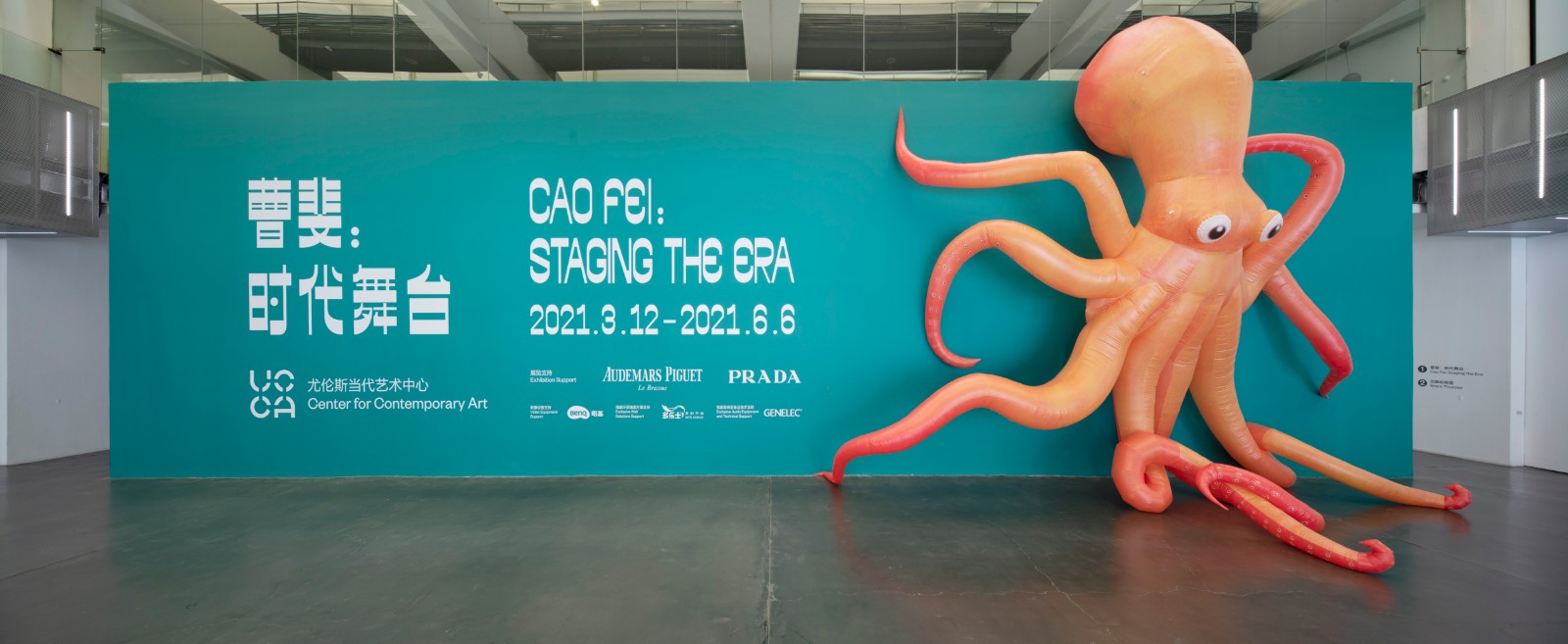
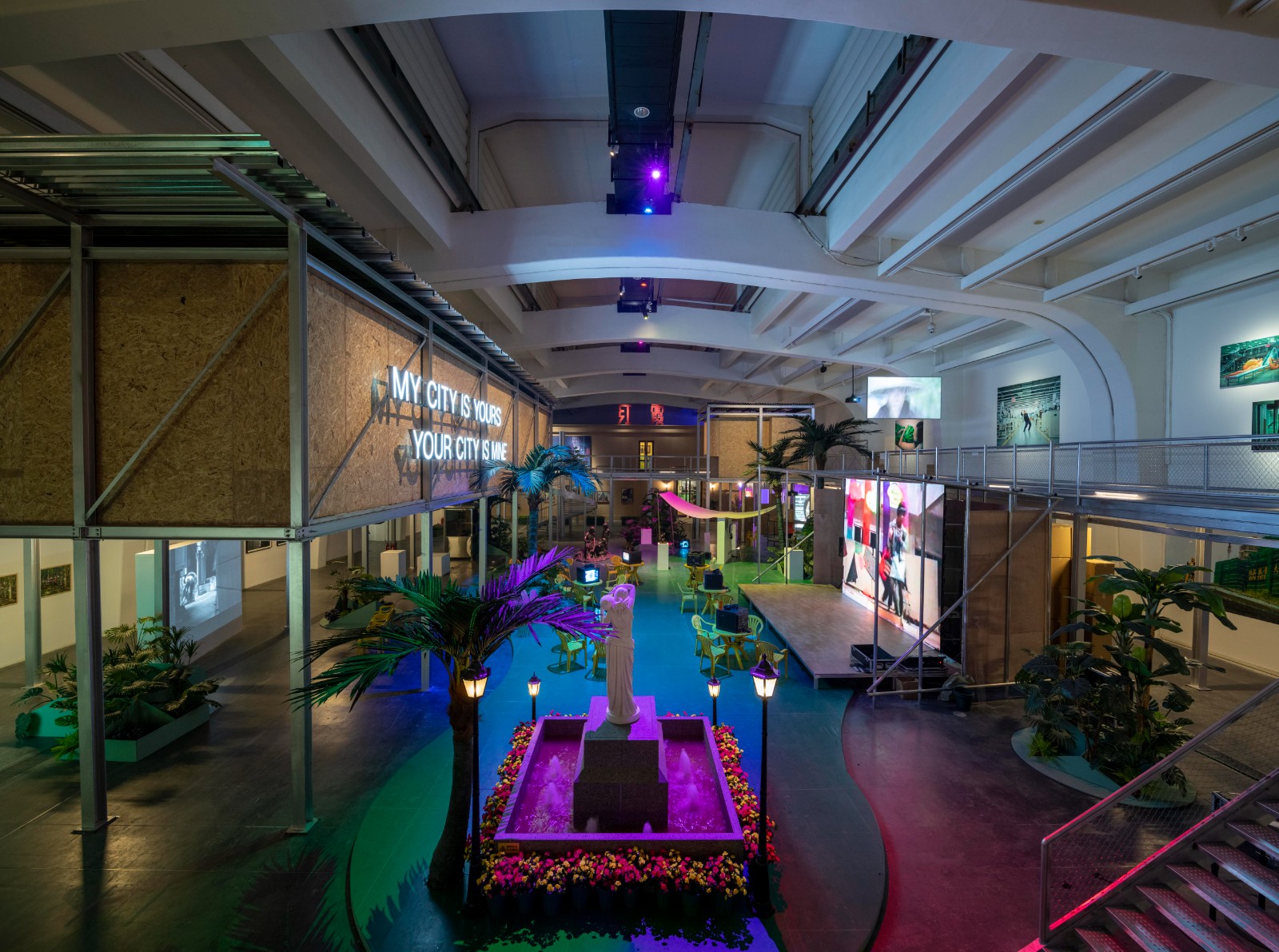
Exhibition View, Photo by Stefen Chow
In this unique “Staging the Era”, obviously what matters is not to satisfy any “classification addiction”. Perhaps exactly as Cao Fei said at the opening ceremony for the exhibition, for her this exhibition was not a summary but a career retrospective. Compared with showcasing previous works, she hoped that each spectator can approach the space and stories when they visit the exhibition, and they may also get a perceptual response from their experience.

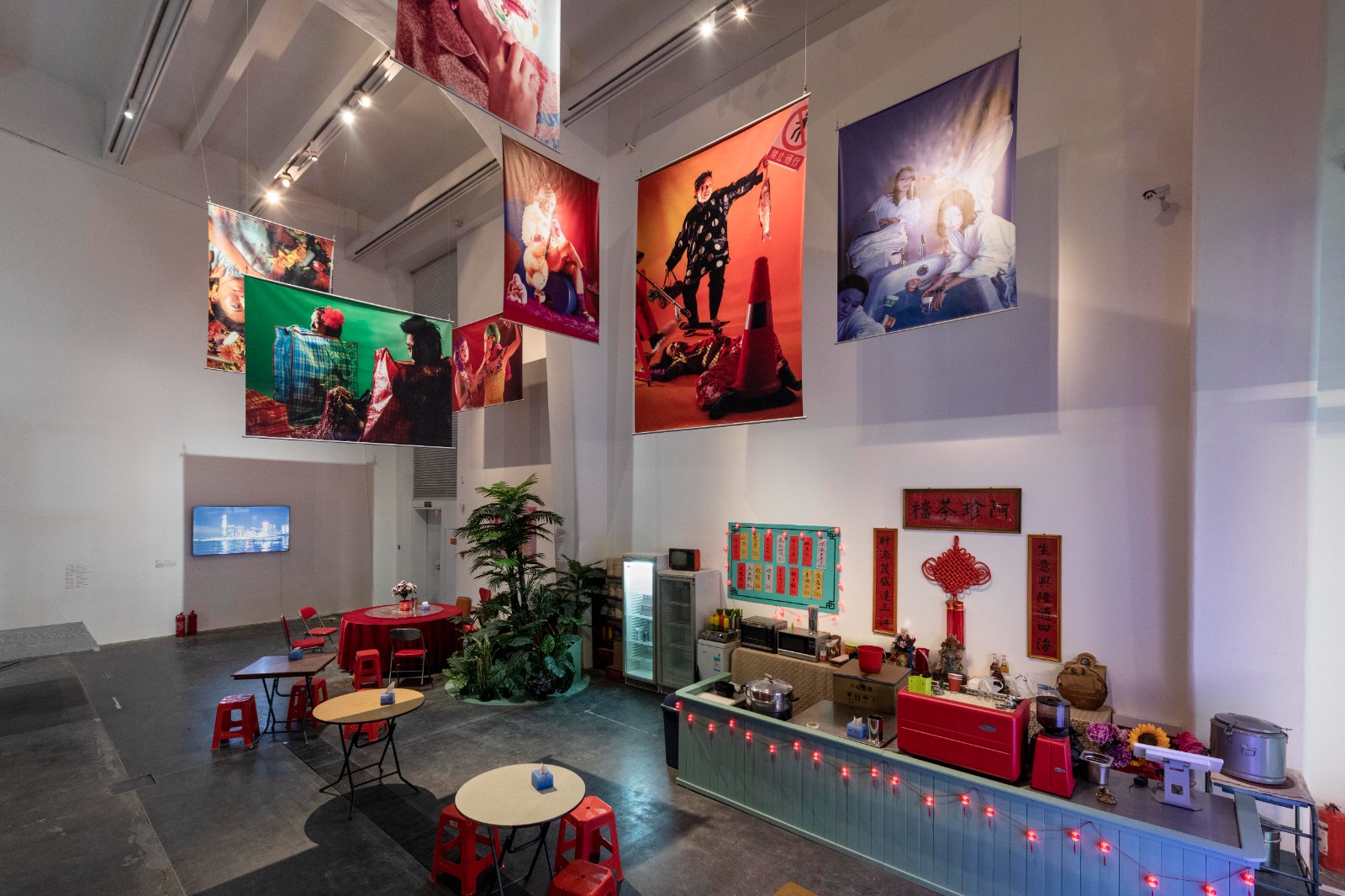
Exhibition View, Photo by Stefen Chow
Viewers might feel like being in a dense and complicated jungle of images after they walk into exhibition, as it is mainly composed of a large number of fragments of history, daily life and imagination. Various kinds of noises from all directions which might make people feel instinctively disturbed, but these short-term dizziness and long-term “l(fā)ost feeling” caused by complicated structures, can be regarded as a vivid portrayal of the era that we live in.
Stepping out of “The South”
“The South”, as the first chapter of the exhibition, covers the early works that Cao Fei has created from her collage years through to 2005. Most of the artists who were born in the 1970s and grew up in the economic transition period of China, have a complete experience of urban life and they have been exposed to commercial culture and accompanying pop culture from early on, these also include their acceptance of the technological influence brought by the new media. In the “Artist Room” specially constructed for the exhibition that is close to the gallery, there are “remains” of the artist’s early contact with media and cultures in her growth, these DVDs, video tapes, tapes, records, handheld Digital Videos, etc., reflect the personal growth history of the artist.



The “Artist Room” of Cao Fei
The “Guangzhou Export Commodities Fair” (also known as The China Import and Export Fair), which predated the reform and opening up, has brought an open market environment to the Pearl River Delta region, and it further introduced extremely rich cultural and media resources with complicated origins to China. Cao Fei was born in Guangzhou in 1978, thus most of her early works revealed that she was influenced by the special geography of Guangzhou in terms of themes and media. Among the works selected in “The South”, San Yuan Li (2003) and PRD Anti-Heroes (2005) were created by Cao Fei based on her growth background.
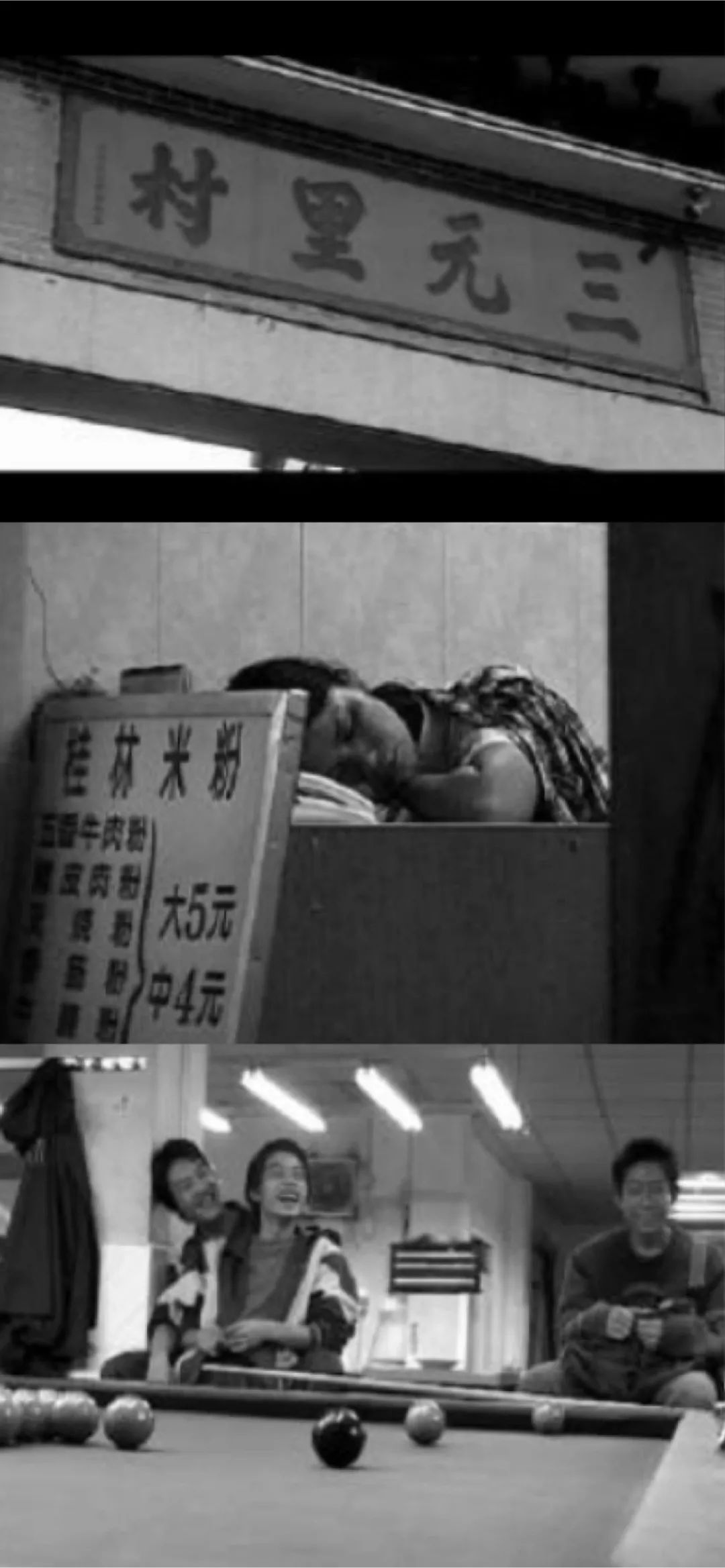
Cao Fei, San Yuan Li (Still), 2003, Courtesy of the Artist from http://www.caofei.com/.
San Yuan Li (2003), jointly produced by Cao Fei with Ou Ning and U-thèque, adopted a documentary approach to explore contemporary “San Yuan Li”. It recorded with a rich rhythm and swift montage of slides, portraying a secular portrait of San Yuan Li in 2003 as a “village in the city”. The serious issue of living between the history and the present took place in the roaming tracing of sources, and also in the “interlacing of time and space” that filled in the viewers’ imagination. Hence, the seemingly scattered and lost historical fragments during the rapid transformation of modernization have been endowed with a poetic discussion.

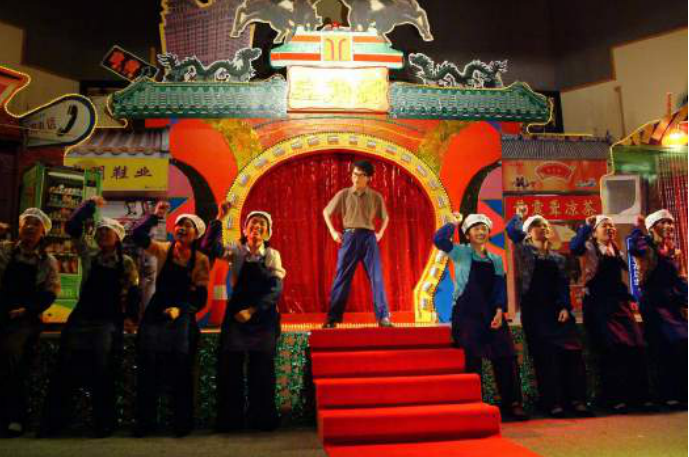
Cao Fei, PRD Anti-Heroes(Still), 2005, Courtesy of the Artist from http://www.caofei.com/.
Cao Fei tried to capture the complex cultural pedigree of Guangzhou in a dramatic way through PRD Anti-Heroes (2005). She explained the creative idea of PRD Anti-Heroes in this way, “I said I wanted to make a drama, and it was a flowing drama... I set up a stage background in a small lecture hall. Then I integrated histories, allusions, legends, folk customs, contemporary gossip, social knowledge from Guangdong and Pearl River Delta, into a dish. It also included the fusion of soap operas from Hong Kong and Taiwan, as well as beauty pageants in Hong Kong...and countryside women who worked in the cities, even the themed music on the Southern Tour by Deng Xiaoping...” 1 It is noisy, rich, philistine, and dynamic, and its richness makes PRD Anti-Heroes an almost overwhelming “Biography” in a list style; It conveys that because the local area has always been at the intersection of various cultures for a long time, and is always in the process of transformation and hybridization, it appears to be extremely unstable and overwhelming. And this accumulation of elements like “Steamed Abalone with Shark’s Fin and Fish Maw” accurately capture the spiritual characteristics of the geography and era of that the artist’s native hometown situates.
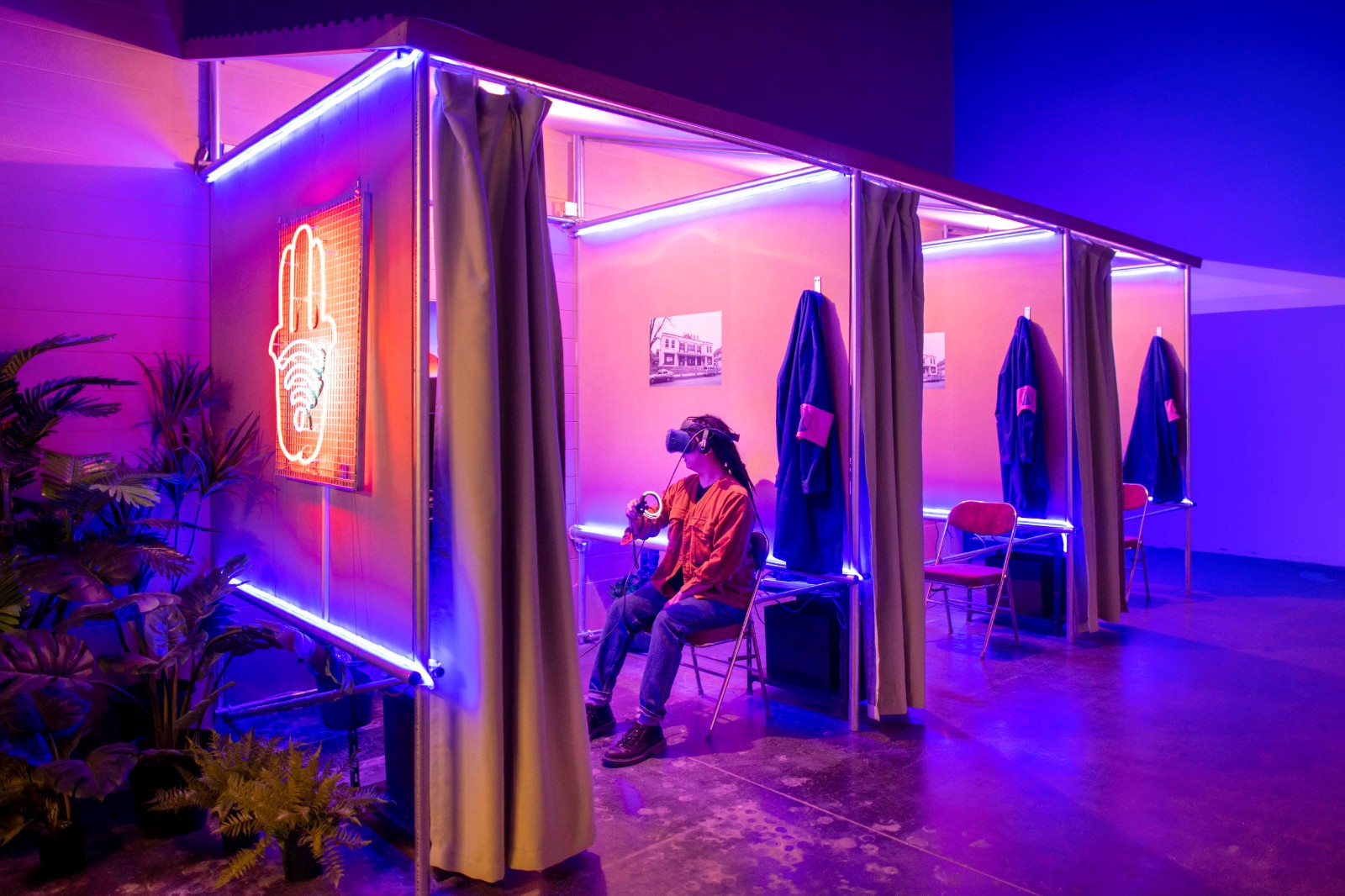
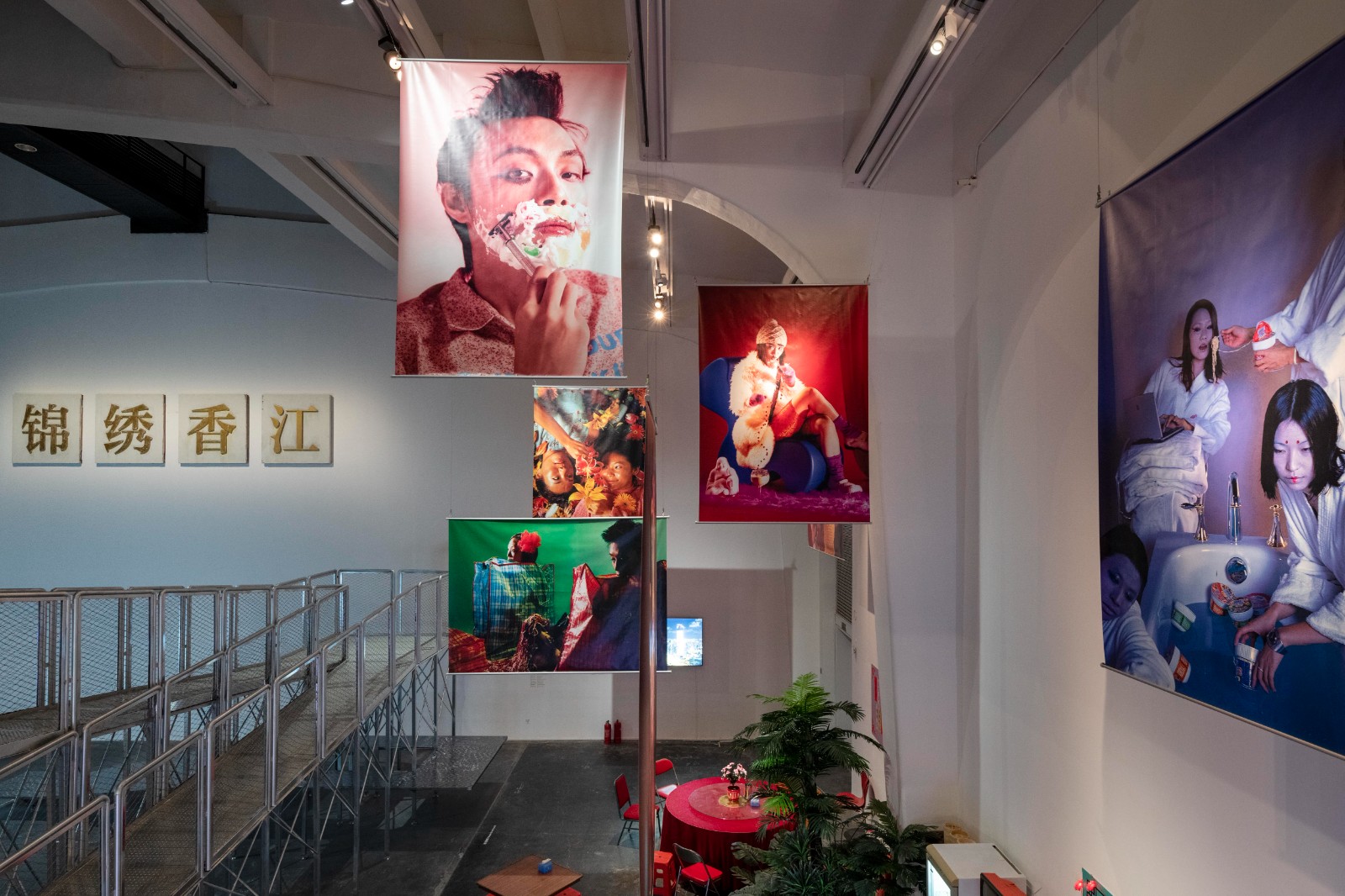
Exhibition View, Photo by Stefen Chow
Breaking into “The City”
When the artist withdrew from her attention on the local spirit of “The South”, another important theme in her art career emerged.
Zha Jianying exclaimed in Interviews in the 1980s: The 1980s was a “l(fā)ate adolescence” of the era. 2 However, the 1990s did not smoothly enter the adult stage, but showed a certain characteristic of the “l(fā)ate maturity”. From the “cultural craze” in the 1980s to the 1990s, the sudden emergence of consumerism and popular culture laid the foundation for the rebellious feature of “counter-mainstream culture” in the 1990s. The artist left a proof of the presence of a young creator in her works during this period.


Cao Fei, Hip Hop (Still), 2003, Courtesy of the Artist from http://www.caofei.com/.
“The City” is mainly composed of two art projects: Hip Hop(2003)and Cosplayers (2004).
As a member of contemporary social life, Cao Fei’s attitude towards popular culture is not equal to a completely negative and critical one. Seemingly this feature can be commented from the following judgment: “There is both a critical and reflective side. It can also be seen that creators are stimulated by the complicated urbanization process to produce a creative side.” 3 Pop culture can be both the object of reflection and the source of creativity.


Cao Fei, Cosplayers(Still), 2006, Courtesy of the Artist from http://www.caofei.com/.
In Hip Hop and Cosplayers, a city was called a playground for fans of subcultures. Its specific expression was that at the beginning of Cosplayers, a city was just a flat background. At the end of the work, the young subculture lovers returned to their “ordinary” lives. In the sense of humor produced by the contrast between subculture and personal identification was led to a path with no standard answers.
In early interviews, Cao Fei stated that she was influenced by Federico Fellini, Jan Svankmajer, and Shuji Terayama and so on. 4 Through presenting “game spirit” and surrealism, Cao Fei’s surrealism expression is closer to discovering the absurd elements that actually exist in social life if compared with Shuji Terayama. Only by finding the absurdity in the process of urbanization, does she strive to grasp the fleeting overlap between the sense of absurdity and reality. The seemingly absurd “joy in suffering” of individuals in this transitional zone seems to be the taste of “The City” in the contemporary society.
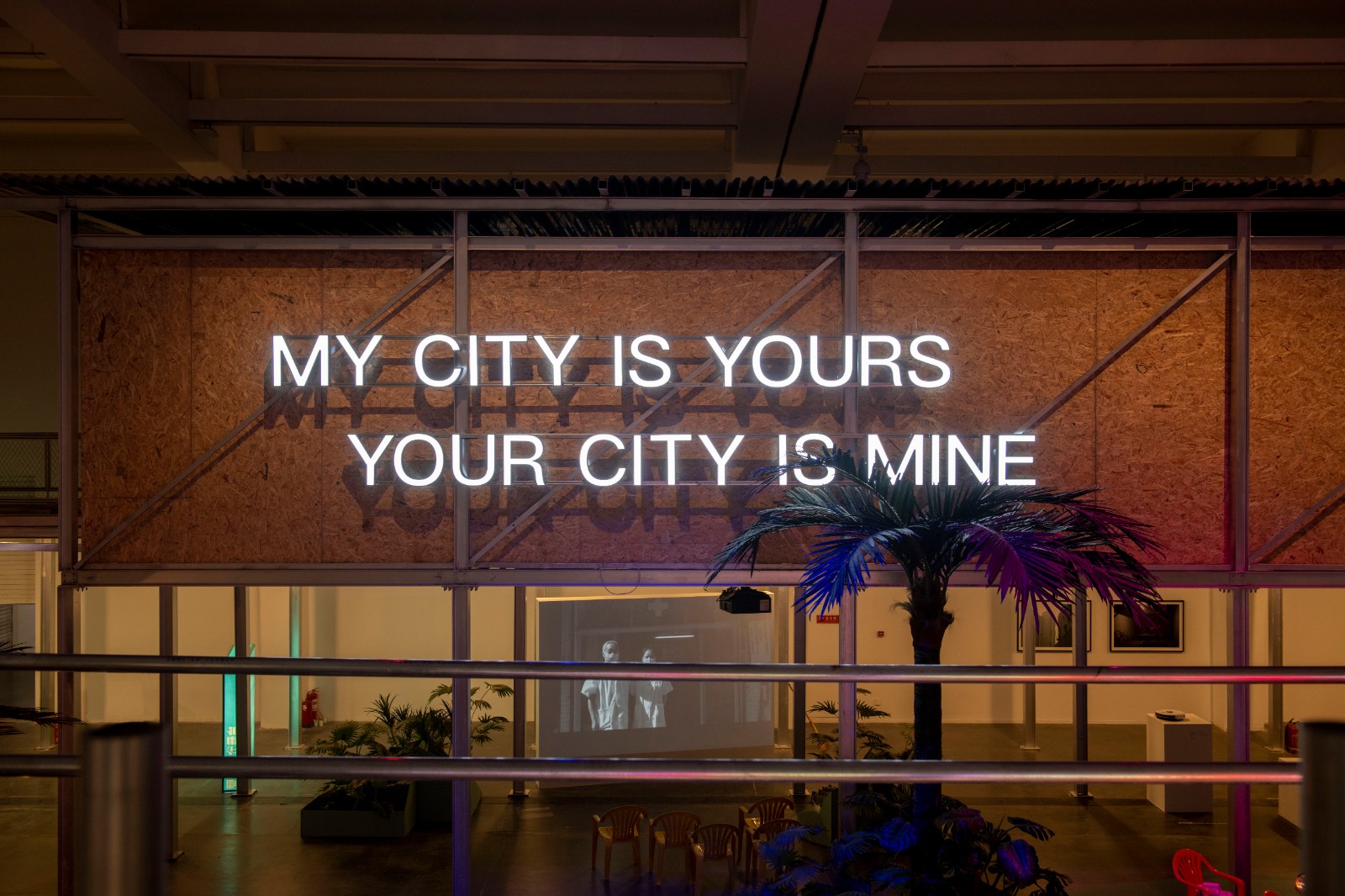
Exhibition View, Photo by Stefen Chow
Inside and Outside the Workshop, Changes and the Unchanged
In 2006, Cao Fei was invited by SIEMENS to create Whose Utopia. Since then, she has developed an interest in the alienation of people in mass production and living state under the macroscopic industrial system.
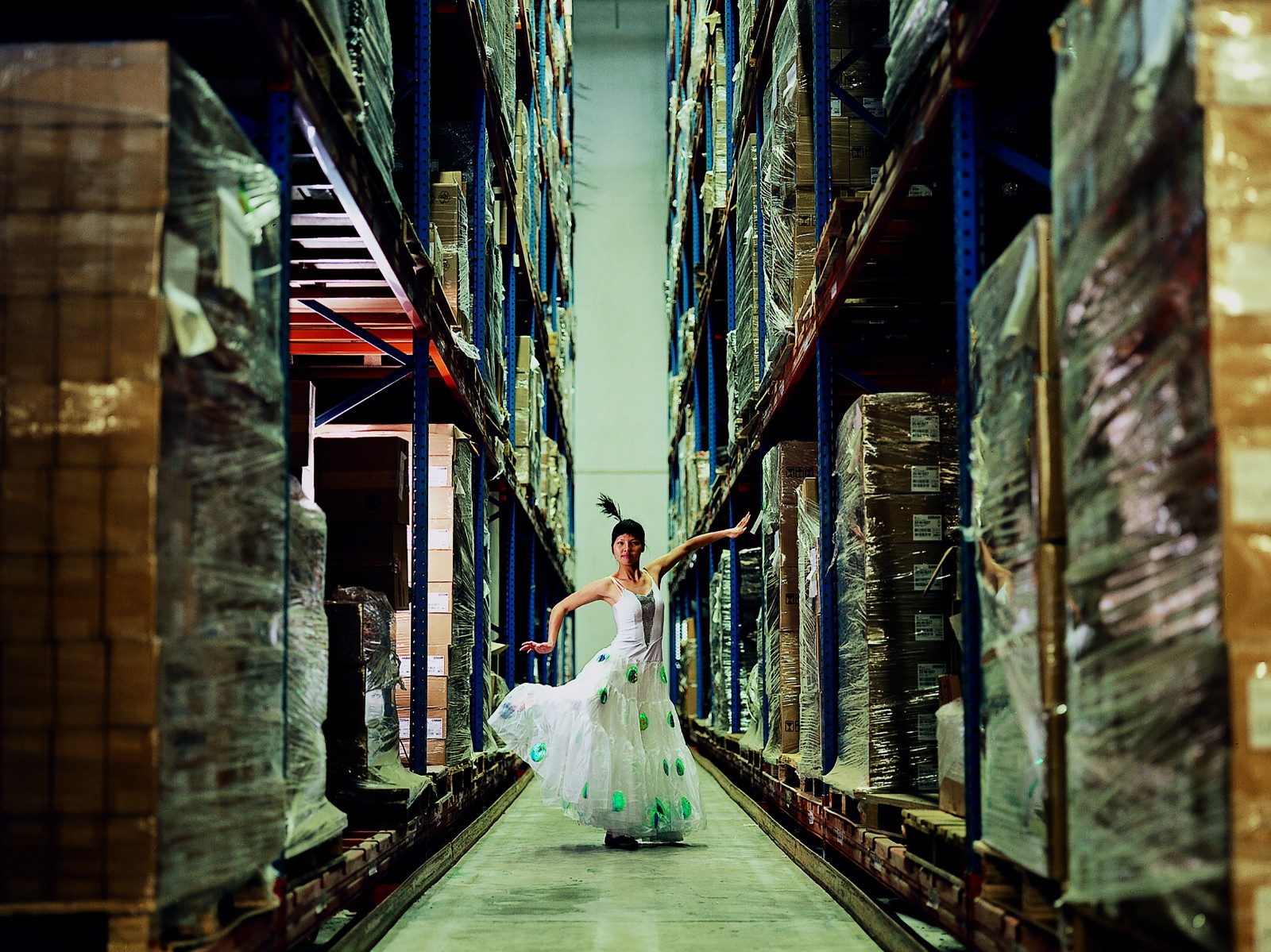
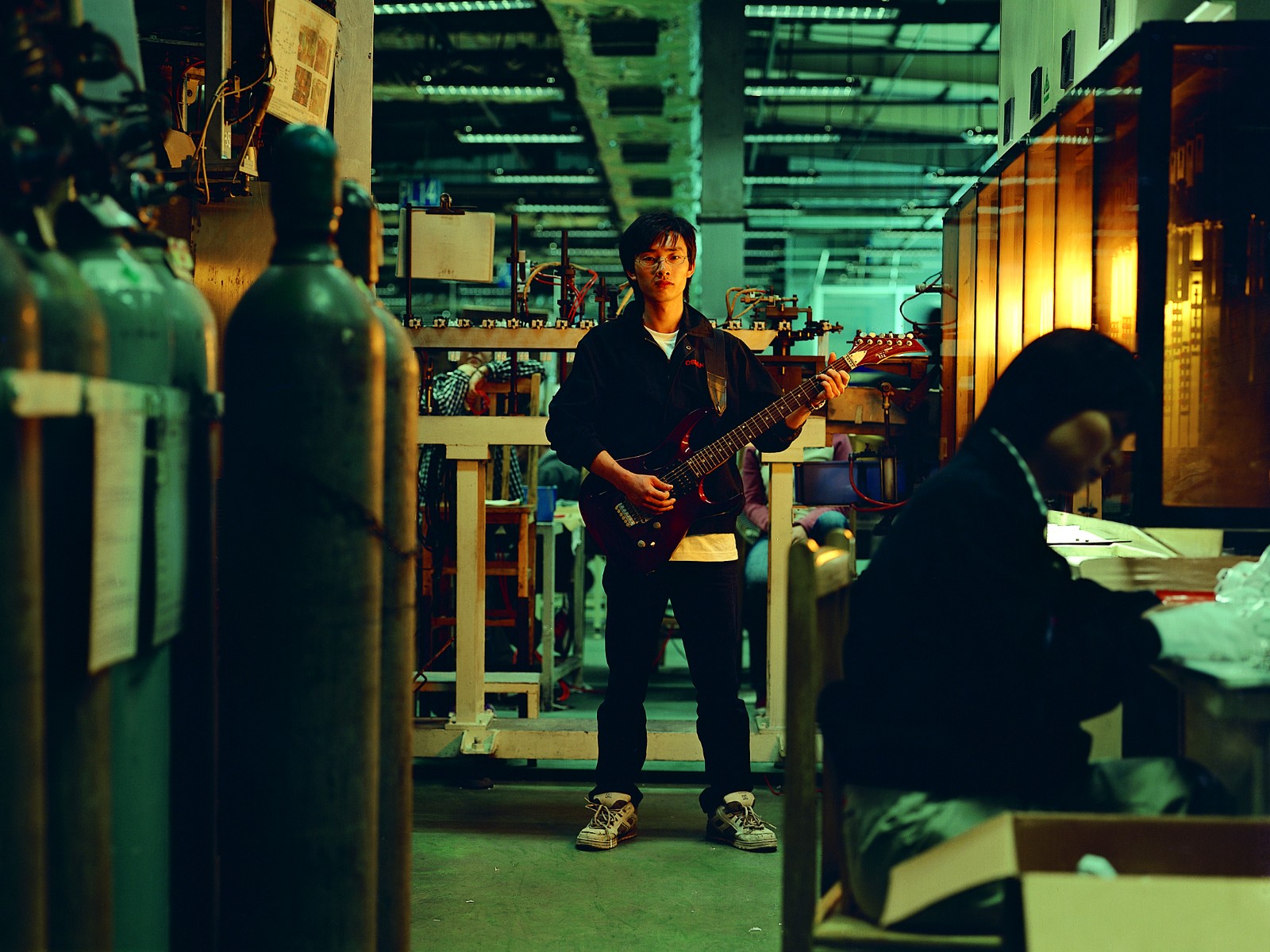
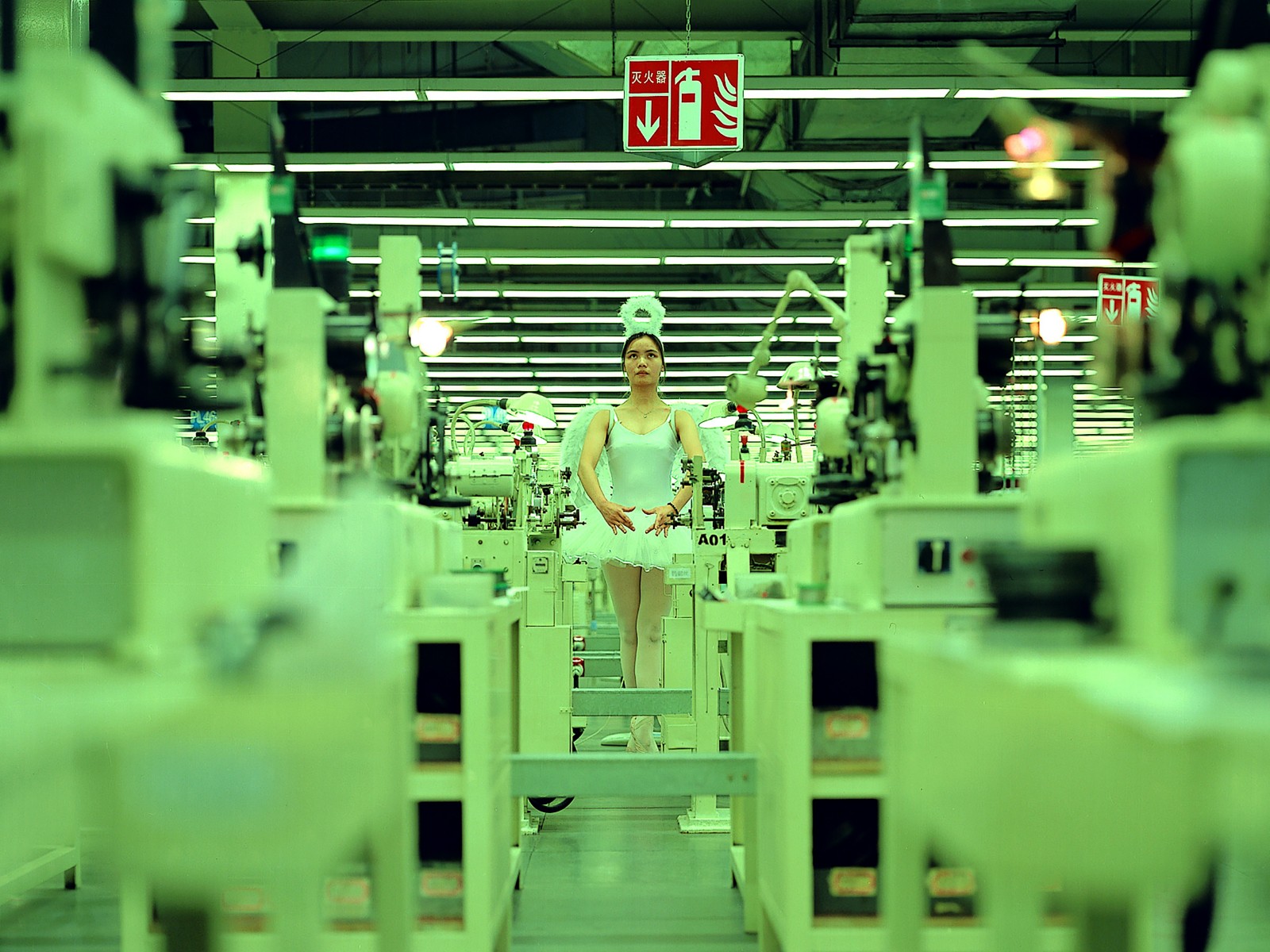
Cao Fei, Whose Utopia (Still), 2006, Video, 20'. Courtesy the artist, Vitamin Creative Space, and Sprüth Magers.
It was also in a workshop that Asia One was created in JingDong Logistics Park in 2018. It shows a different texture from the absurdity of the magical realism in Whose Utopia, the appearance of Asia One has a futuristic sense which is similar to a science fiction film, and a sense of dissimilation with apocalyptic style, which reflects her advancement in similar themes. From SIEMENS to JingDong, from 2006 through to 2018, various changes in social development were reflected in her works. The former was an anthropological investigation of labor-intensive industries, and the latter began to explore ethics and morals related to technological alienation as well as diversified states of dissimilation among producers and consumers in the research.

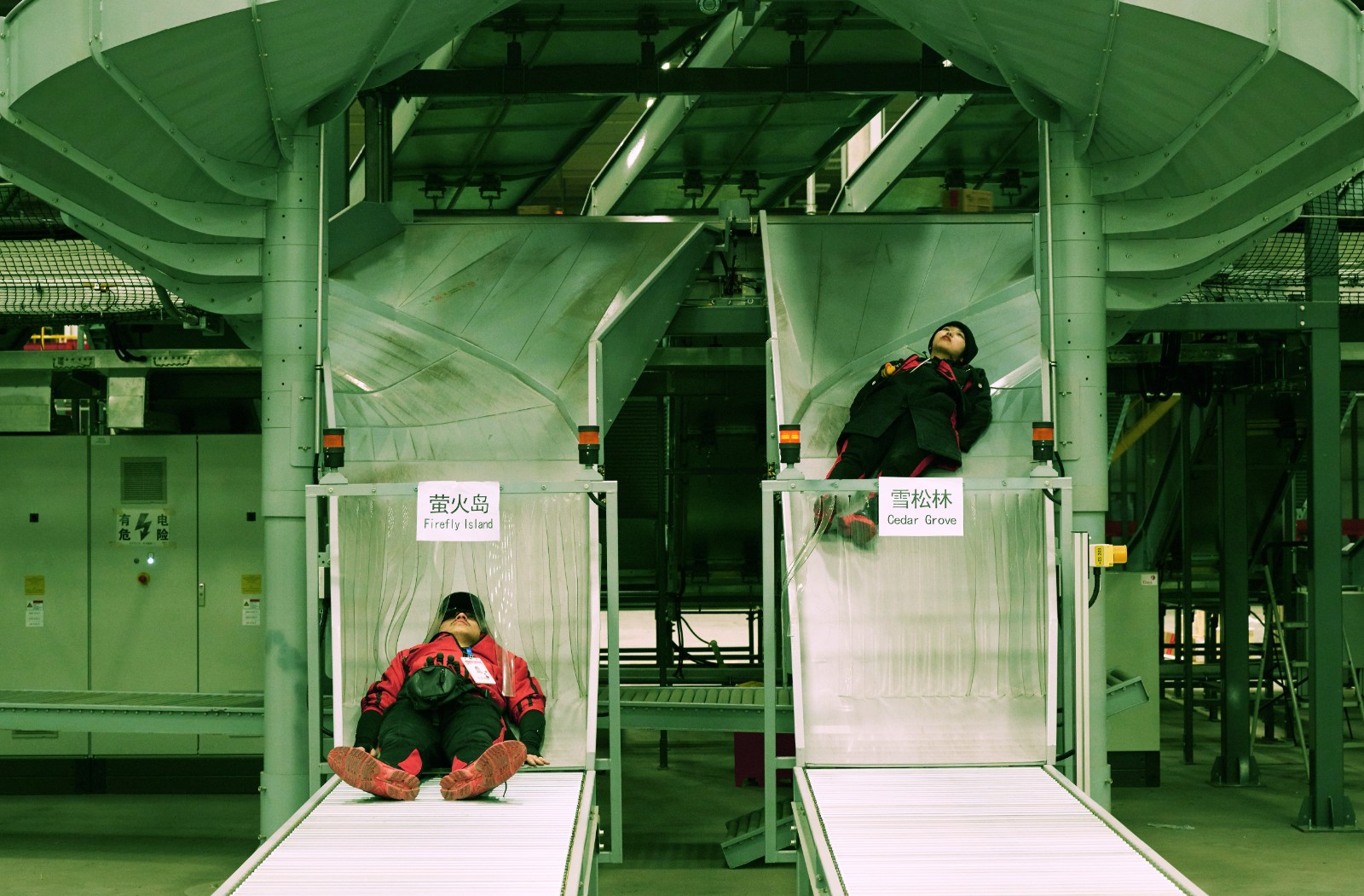

Cao Fei, Asia One (Still), 2018, Video, 63'20". Courtesy the artist, Vitamin Creative Space, and Sprüth Magers.
In the artist’s creation, a workshop is not a fixed field, but a symbol of production and life mode of contemporary people. Then, how to resist the rejection of labor in the stage of capital densification, as well as the fate of dissimilation that is inevitable for individuals? Corresponding to its temperament like a science fiction, Asia One has a core of traditional love story. Different from Whose Utopia, Asia One (2018) with the workshop as its background finally seems to be determined a direction by the artist: to summon and revive the most basic and simple emotions of mankind.
Looking for the “Electronic Wandering Soul” in the “Alternative Reality”
The fourth chapter of the exhibition, “The Simulation” presents Cao Fei’s creation themed on the “City”, which mainly includes the second life video of RMB City in 2009, and the video installation “RMB City” series (2007-2012), as well as the artist’s latest project Hongxia (2019).
In recent years, Cao Fei has developed a researching and creative method similar to sociology and anthropology. In her latest project Hongxia, this kind of research has been developed as deeply as possible. It is worth noting that the research object of the Hongxia project itself implies a period of “archaeology” in the technological history of People’s Republic of China. The predecessor of 798 Art District was the Jiuxianqiao Industrial Base with a glorious history in the developments of Chinese electronic technology as it was called as the “Cradle of New China Electronics Industry.” In these buildings of factories by the aid of support from the Soviet Union and Germany, the first computer of People’s Republic of China was born. The Hongxia Theater was an important landmark that provided workers with entertainment, so it was full of symbolic significance of that period.
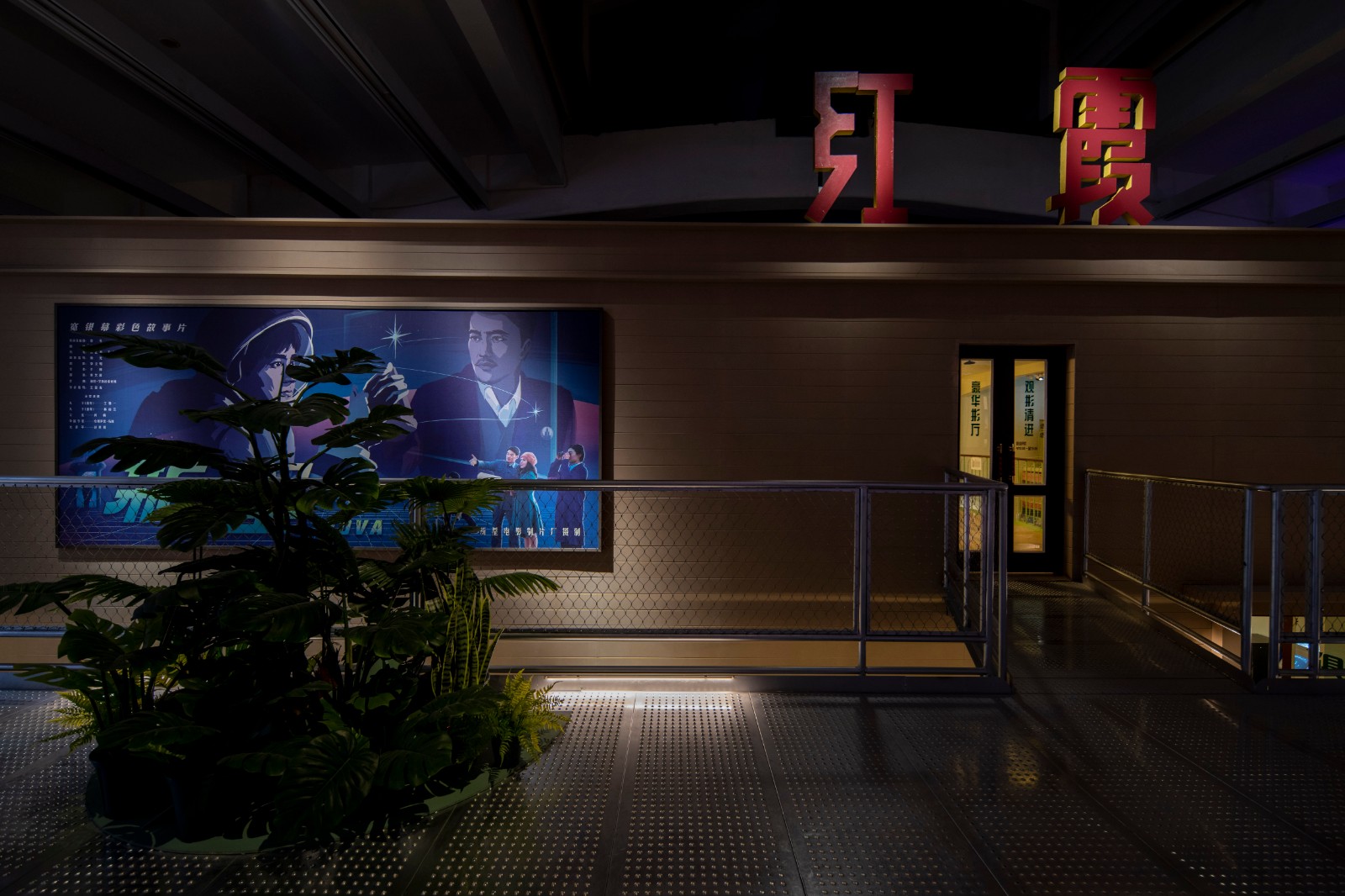

Exhibition View, Photo by Stefen Chow
Standing on the starting point of China’s electronic technology, Hongxia Theater belongs to the history. However this space had produced and been endowed with various optimistic and romantic imaginations of workers for the future. The future and the past, ideals and reality overlap in “Hongxia” which appears to be particularly alternative for it has withdrawn from the stage of history due to decay.
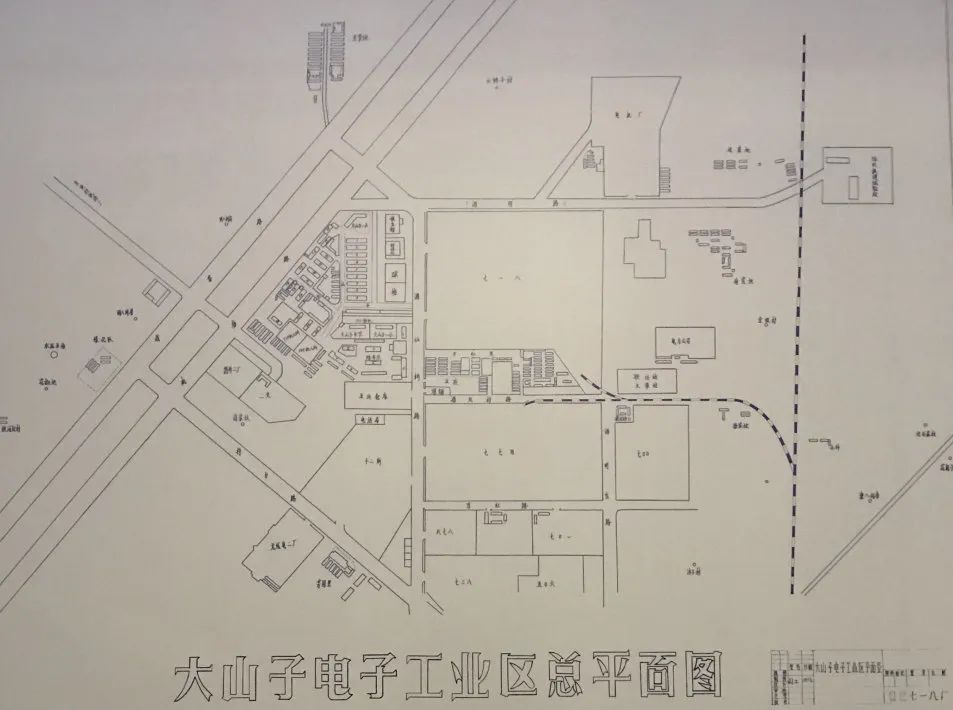
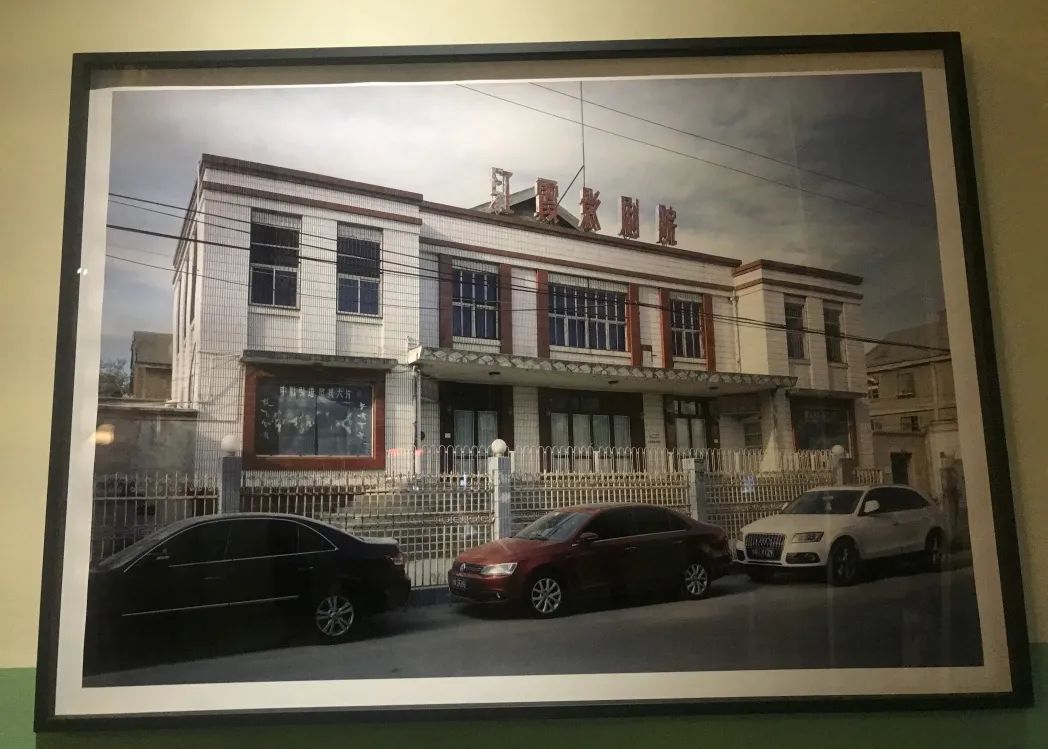
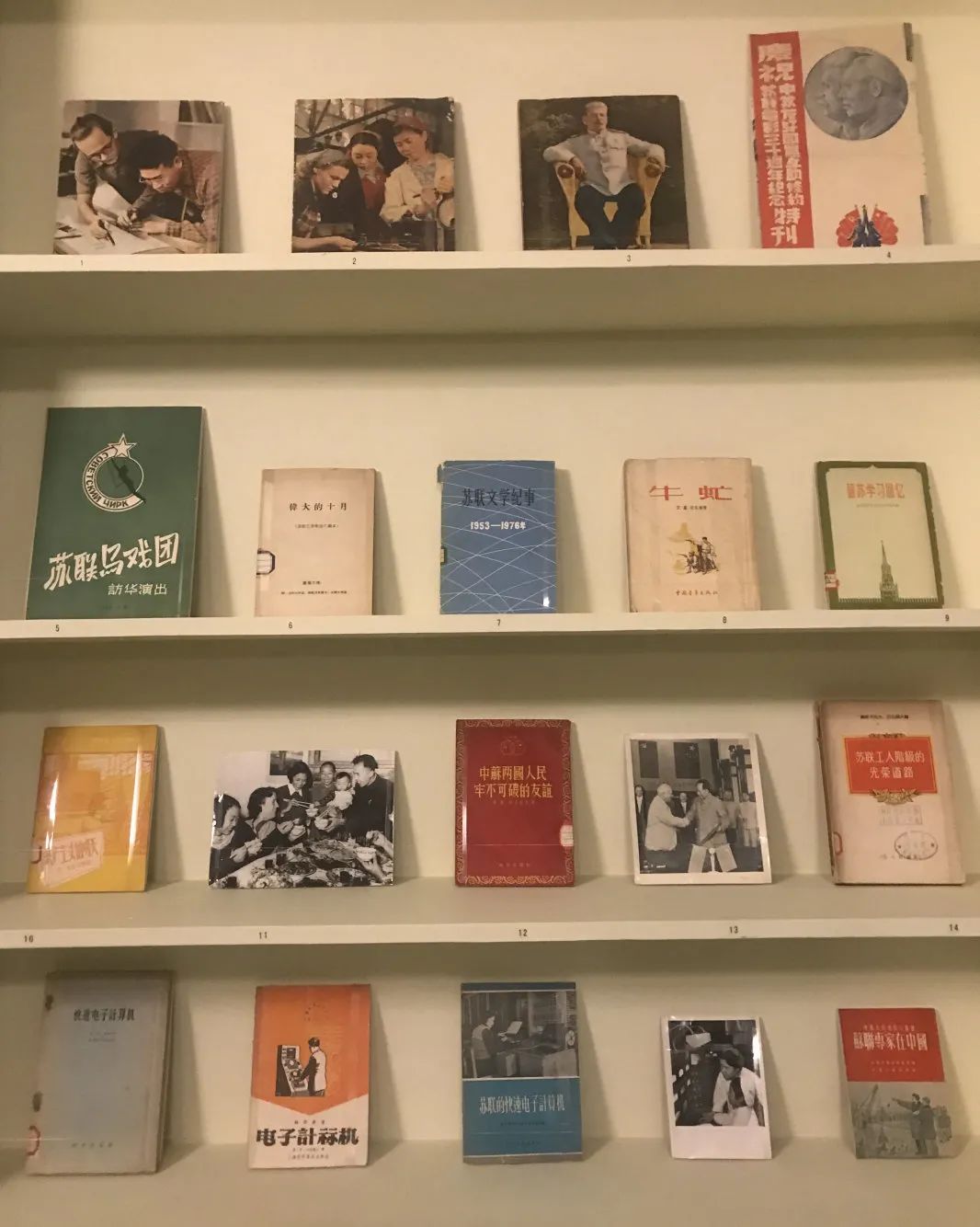
Research Show on “Hongxia”
In Cao Fei’s research and works, Hongxia has been entrusted with a symbolic meaning as a “ruin” that carries the dreams of the past for the future, and it has a non-linear and charming sense of contradiction in terms of time. In the featured film Nova derived from this project, “Nova” is a fictional alternative city full of realistic details, in which history and future, retro and science fiction are in a state of ambiguity.
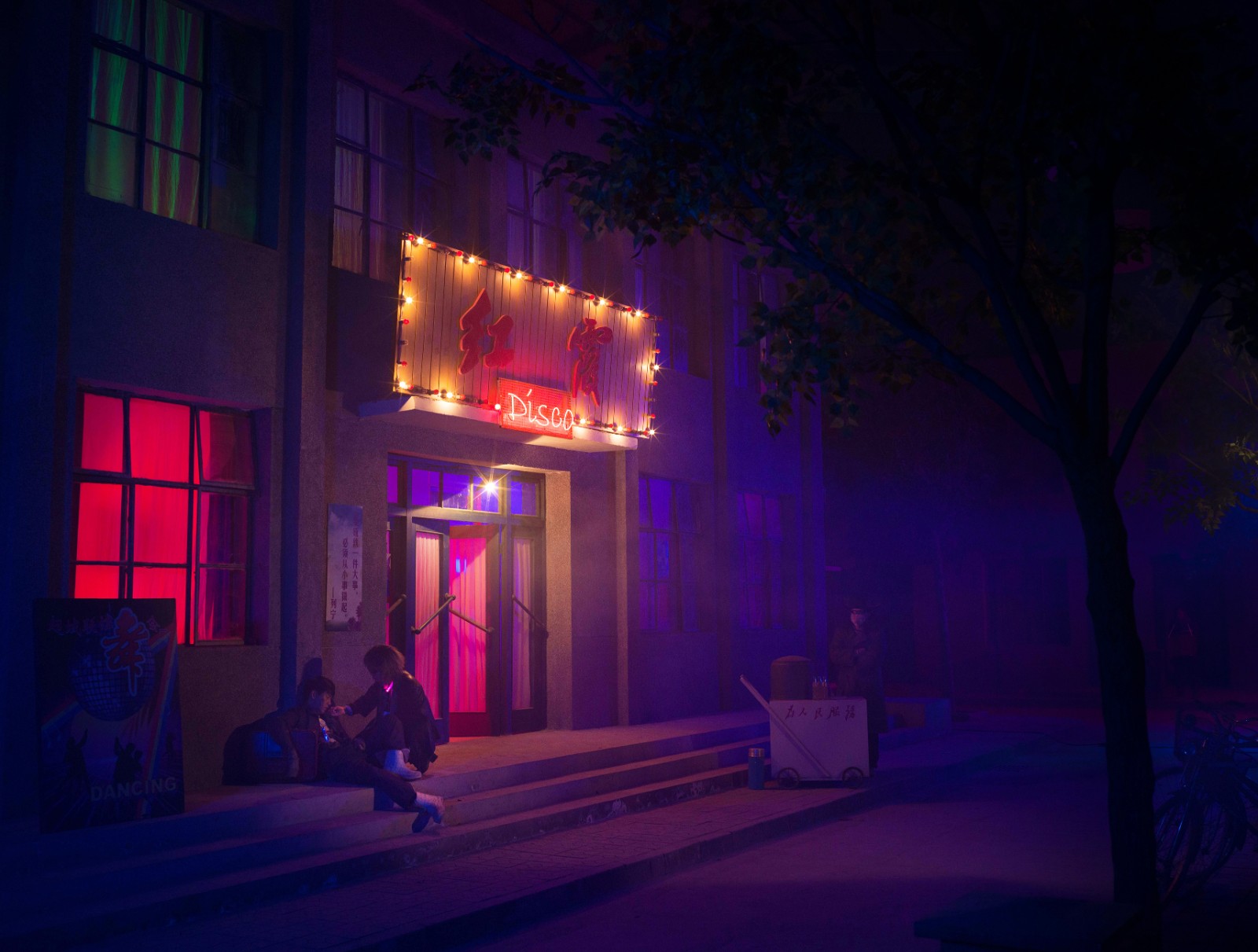
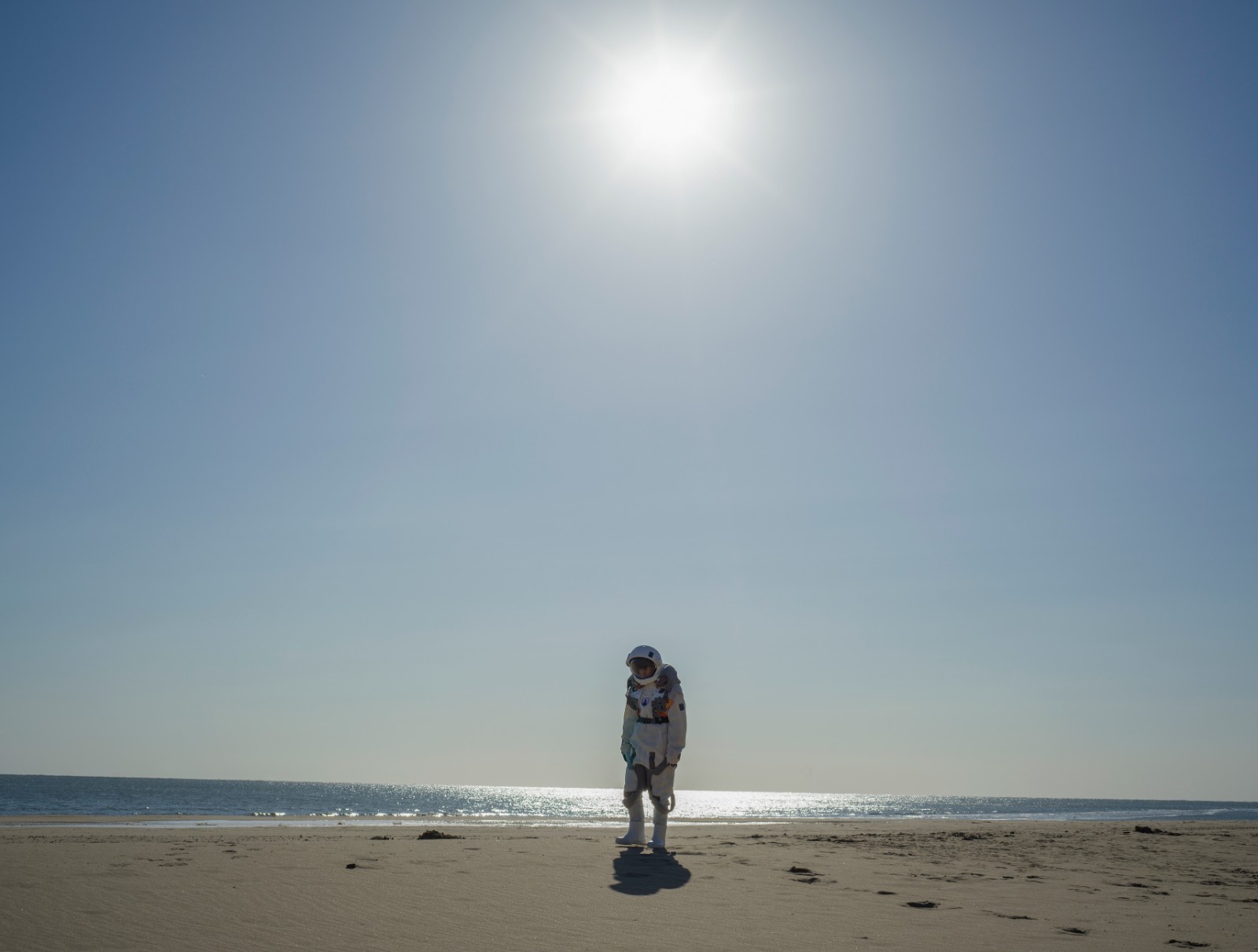
Cao Fei, Nova (Still), 2019, Video, 109'. Courtesy the artist, Vitamin Creative Space, and Sprüth Magers.
It can be said that this non-linear characteristic has been shown in both Cao Fei’s works and the exhibition structure. The exhibition is like the multithemed setting on the theatre stage: from “The South” to “The City”, from “The Workshop” to “The Stimulation”, such as a traditional “drama in four acts”, and the structure itself has a narrative sense and a built-in rhythm. This also makes the presentation of “Staging the Era” like a constantly changing, flowing, and developing “drama in four acts” about the era that we are living in.
Text by Mengxi, translated and edited by Sue/CAFA ART INFO
Photo Courtesy of UCCA Center for Contemporary Art.
1 Cao Fei, from the artist’s publication for the exhibition
2 Zha Jianying, ed. Interviews in the 1980s, Beijing: SDX Joint Publishing Company, 2006.
3 Shen Yubing, “Categorical Distinction in Modern Art Research: Modernism, Avant-garde art, Postmodernism Art”, Hundreds Schools in Art, 2006 (Vol. 4).
4 “ 'Yunnan Influence' New Film Series: Interview with Director Cao Fei”, source: http://ent.sina.com.cn/m/2005-10-27/1821878138.html.
View of the Opening Ceremony
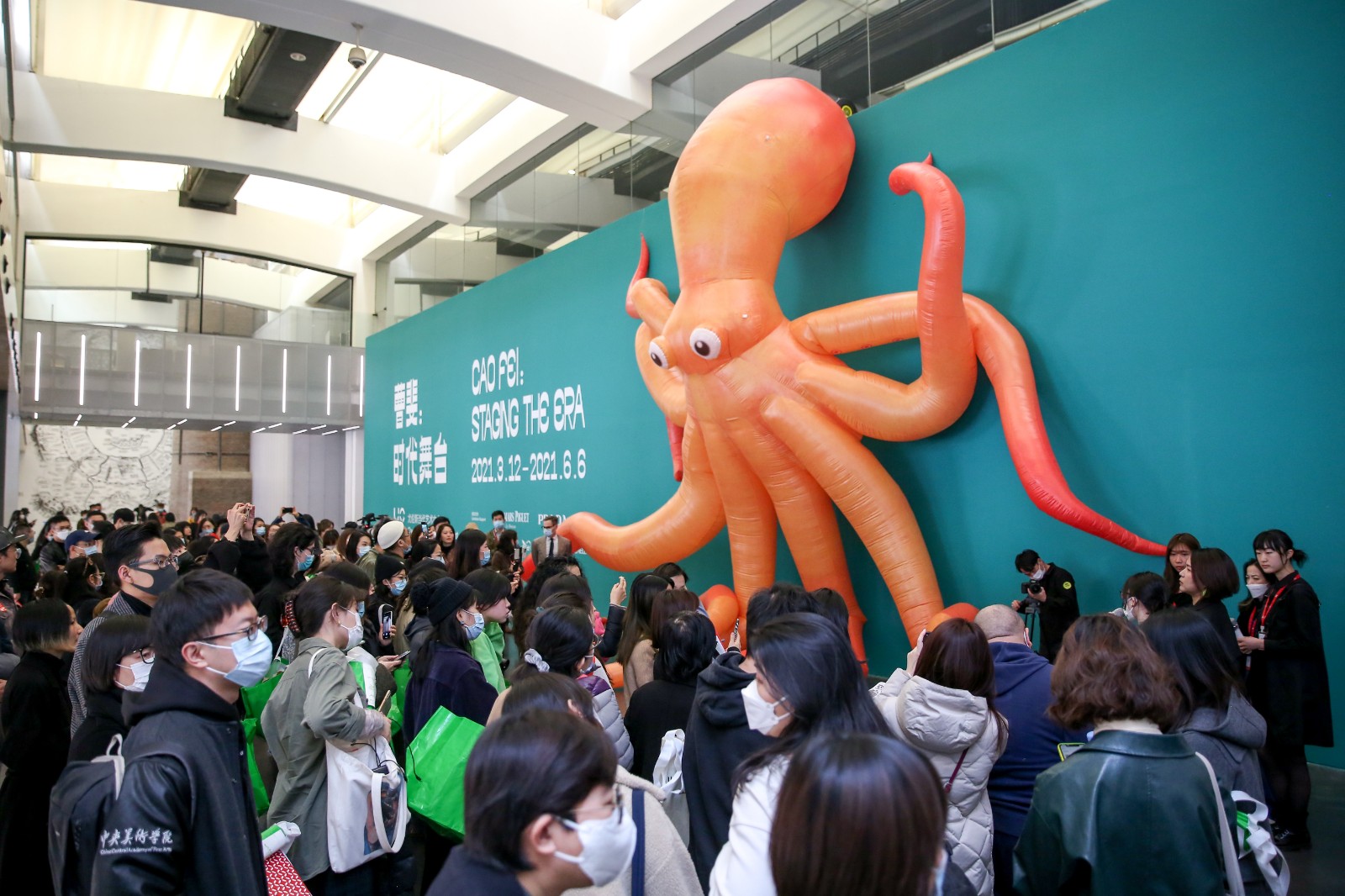
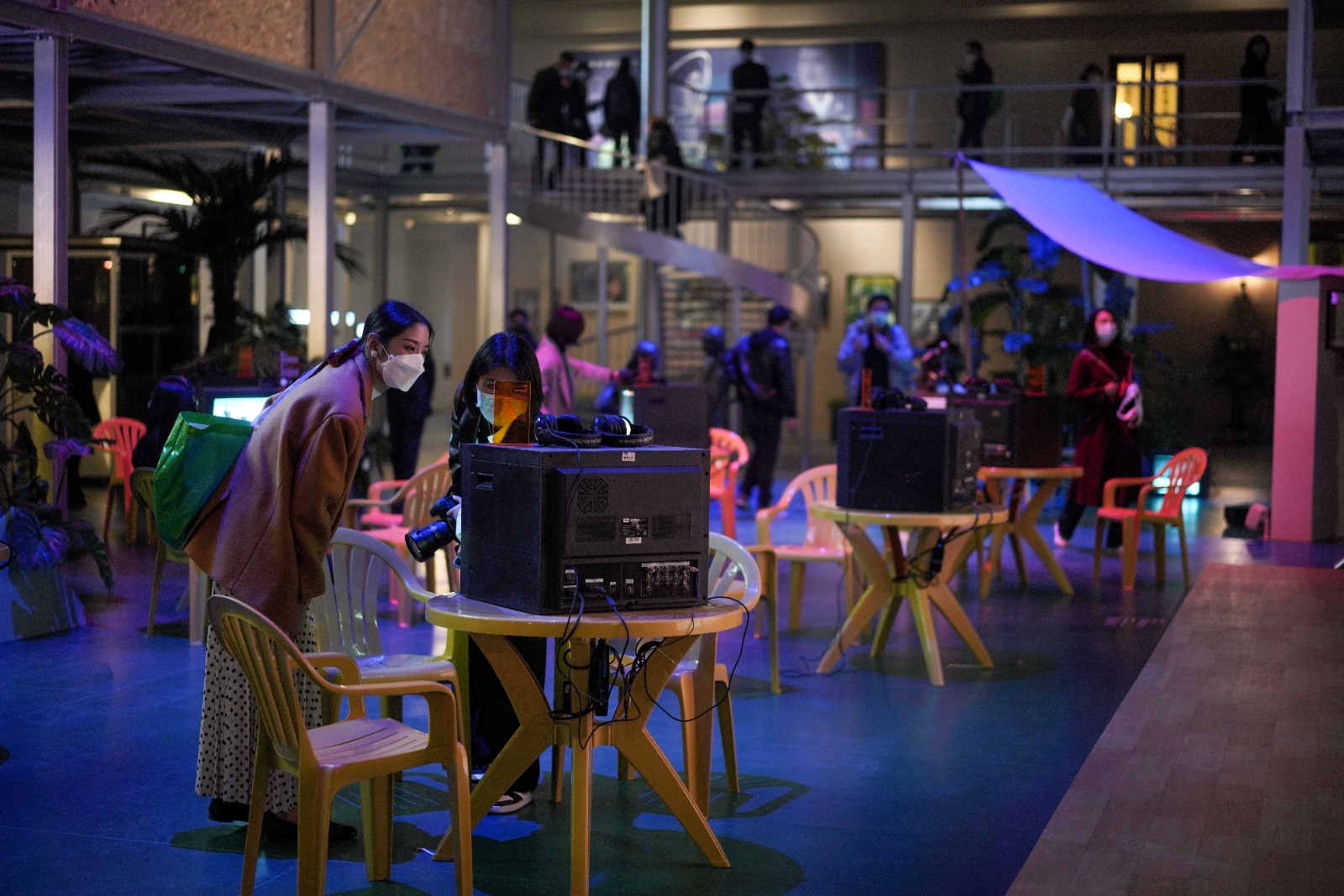
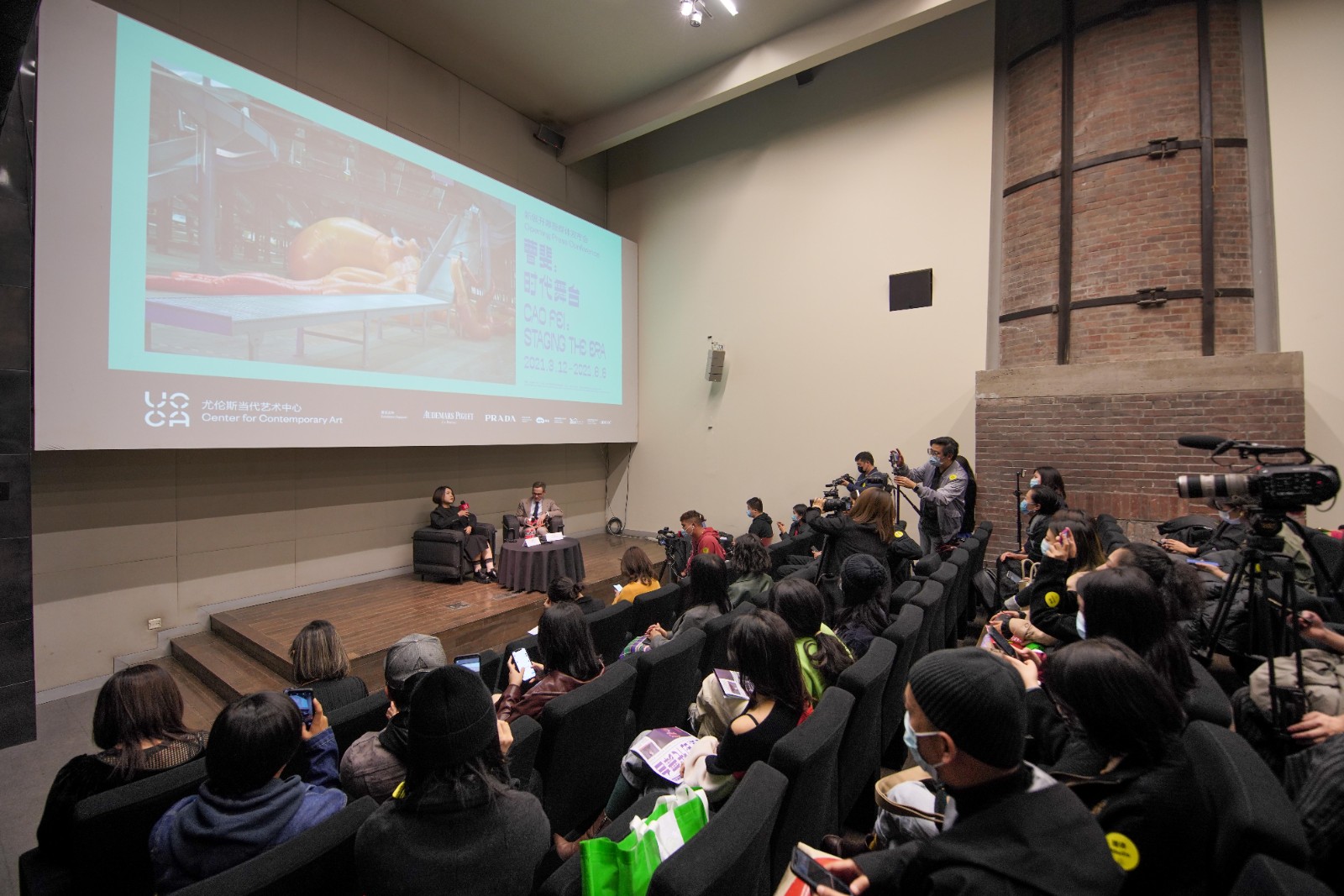
View of the Press Conference
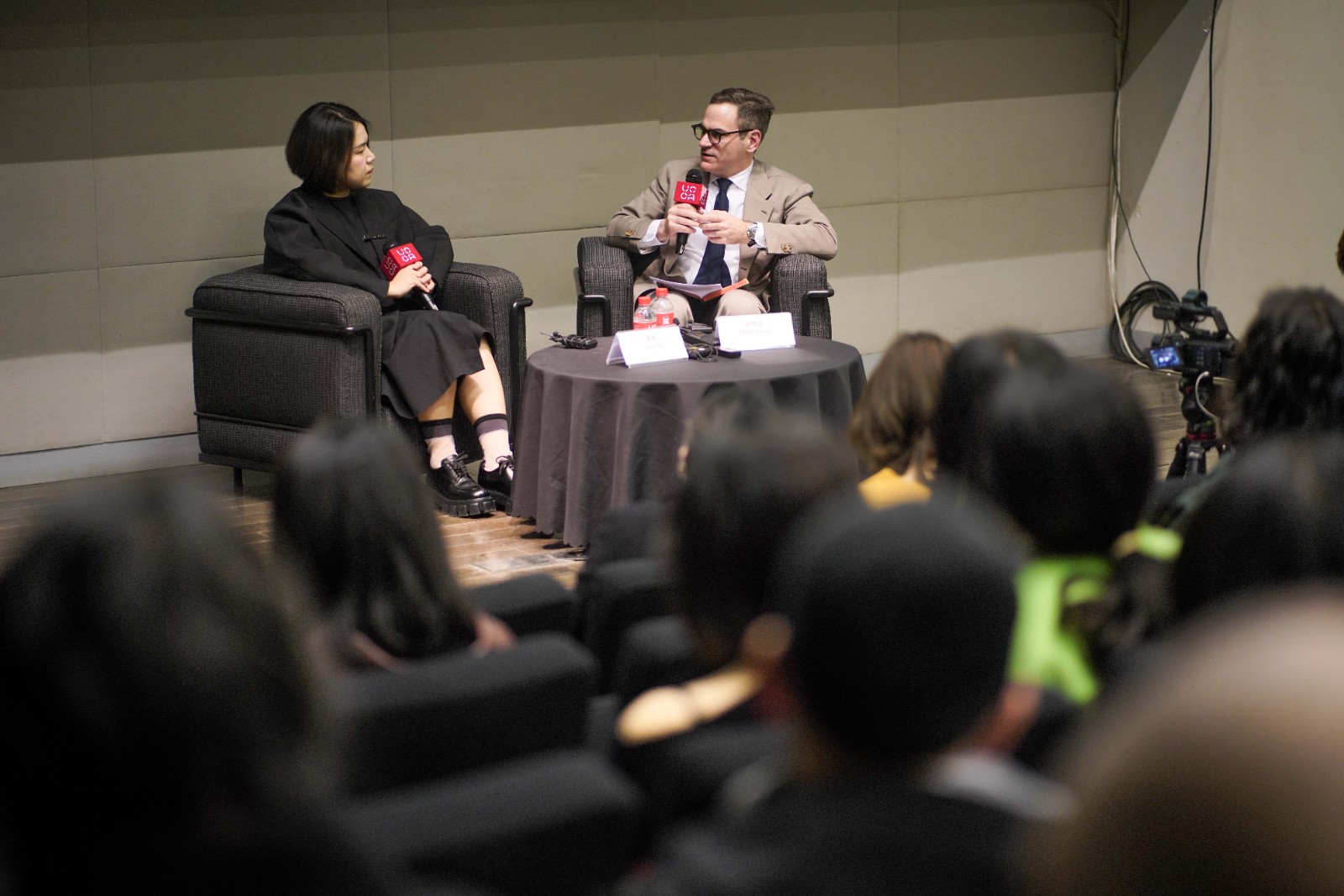
Discussion between Cao Fei and Philip Tinari, Director of UCCA Center for Contemporary Art
About the exhibition
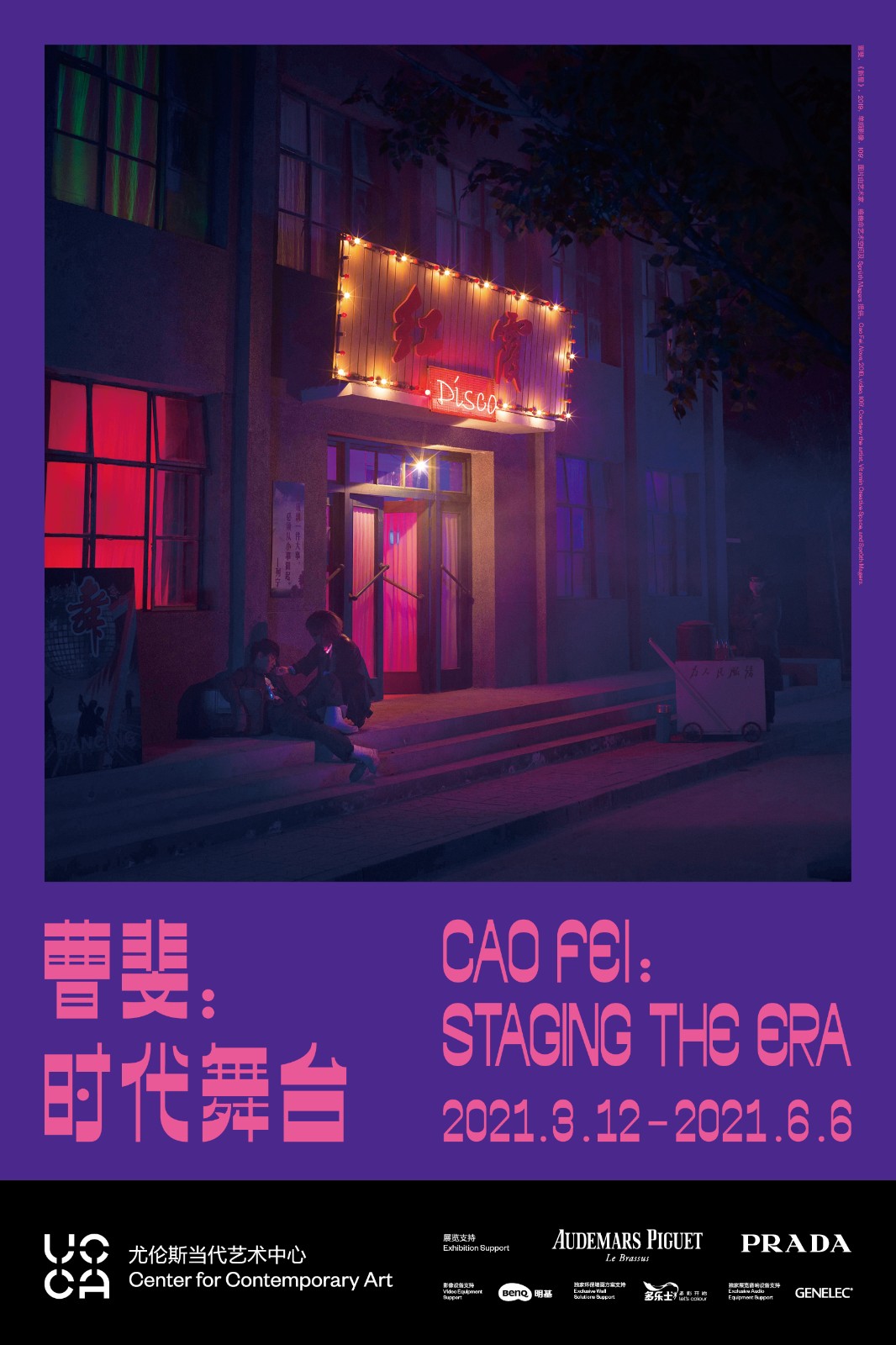
Cao Fei: Staging the Era
Dates: 2021.3.12 - 2021.6.6
Venue: UCCA Beijing




























